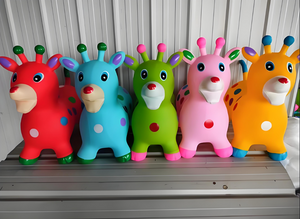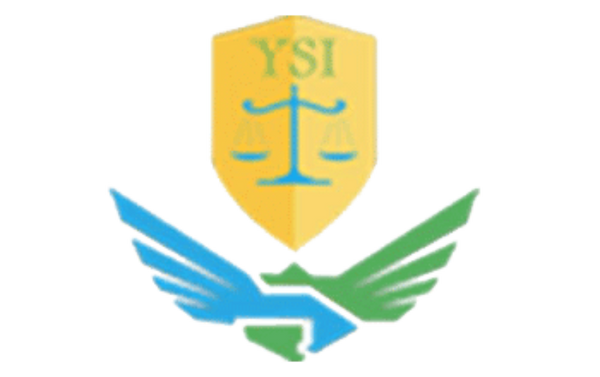
Inflatable Toy Inspection
Inflatable toys refer to toys made of latex or plastic (such as soft polyvinyl chloride film) and filled with air, nitrogen or inert gas, including toys for children to play with that are already inflated or pre-inflated. Such toys generally include balloons for children to play with, inflatable sports imitation toys (such as ball toys), inflatable modeling toys, inflatable carrying toys (such as inflatable furniture toys), etc.
1. Children playing with balloons
Balloons made of latex or plastic (such as flexible polyvinyl chloride film) intended for children to play with.
2. Inflatable sports imitation toys
Inflatable toys similar to sports equipment made of materials such as plastic and synthetic leather, including various inflatable toy balls (such as basketballs, footballs, and volleyballs).
3. Inflatable modeling toys
Inflatable toys in various shapes (such as human figures, animals, etc.) made of plastic (such as soft polyvinyl chloride film) or other materials.
4. Inflatable carrying toys
Toys made of plastic (such as soft polyvinyl chloride film) or other materials that are intended to bear the weight of a child when inflated (such as inflatable furniture toys).
Appearance quality requirements for inflatable toys inspection
The appearance inspection of inflatable toys is carried out by visual inspection with relevant measuring tools, the indoor light should be sufficient, and the viewing distance should be 300mm to 500mm. The appearance inspection of latex balloons is carried out by visual inspection by finger pressure under natural light after they are inflated.
The product surface should be clean and hygienic without any stains.
The appearance color matching should be harmonious, and the accessories of the same color should not have obvious color difference in a single product. The printed pattern of the product should be clear, without obvious bottom exposure and ink bleeding, and the main parts should be accurately colored.
The heat-sealed seams of the products are reliable, the reverse side of the blade is smooth, the edges are neat, and no obvious jagged edges are allowed. The hem cutting should be neat, and the hem width should not exceed 10mm.
After inflatable toys are filled with gas, all parts should be basically filled without holes, bubbles or fish eyes.
Inflatable toys inspection material thickness requirements
Before inflating the inflatable bearing toy made of polyvinyl chloride plastic film, cut the material with a sharp blade on the flat surface of the product. The size of the sample should be 80mm×20mm. Use a thickness gauge with an accuracy of 0.004mm to measure 5 points on the diagonal of the sample and take the arithmetic average. The thickness should be greater than or equal to 0.30mm.
Inflatable toys inspection and filling gas requirements
Inflatable toys must not be filled with hydrogen, acetylene, coal gas or other flammable, explosive, toxic or harmful gases.
Test inflation pressure
During product testing, if the product is marked with a recommended inflation pressure, inflation should be carried out according to the recommended inflation pressure; if it is not marked, the inflation pressure should be carried out as specified.
Inflatable toys inspection sealing performance requirements
Except for inflatable load-bearing toys, inflatable toys are tested according to (inflatable toy overall airtightness test), and the bubble generation interval should be greater than 1 minute.
Test method for overall airtightness of inflatable toys
After inflating the product according to the test inflation pressure, place the inflatable toy 100mm underwater, check whether bubbles are generated, and record the time interval.
If the inflatable toy is large, you can do it separately according to different parts.
Inflatable Toy Inspection Valve Requirements
The valve of an inflatable toy should have a one-way valve.
If the valve of an inflatable toy protrudes more than 5 mm from the surface of the toy, it should have a valve plug permanently attached to the toy. And:
- If the toy is made of soft material such as soft plastic film, the valve plug should be able to be inserted into the valve seat when the toy is filled with gas;
——The sealing performance of the valve plug and the valve nozzle is good. After testing according to the (valve nozzle strength test), the connection between the valve nozzle and the valve plug shall not be broken. And when tested according to the (valve nozzle airtightness test), the bubble generation interval should be greater than 1 minute.
Valve strength test
Torque test
Fix the inflatable toy in a reasonable test position and clamp the valve mouth with a torque test fixture.
Use a torque meter or torque wrench to apply a torque of 0.45N·m±0.02N·m clockwise to:
a) has been rotated 180° from its original position, or
b) The required torque has been achieved.
Apply the maximum rotation angle or the maximum required torque within 5 seconds and maintain it for 10 seconds. Remove the torque and return the test part to the relaxed state. Repeat the above test process in the counterclockwise direction.
Tensile test
Tensile testing should be performed on the same part as the torque testing.
Within 5 seconds, apply a force of 70N ± 2N evenly parallel to the main axis of the test part and maintain it for 10 seconds. Remove the tensile fixture and install another fixture suitable for applying tensile loads perpendicular to the main axis test.
Within 5 seconds, apply a force of 70N±2N uniformly perpendicular to the main axis of the test component and maintain it for 10 seconds.
Bending test
The bend test should be completed on the same part as the (tensile test).
After the product is inflated according to the test inflation pressure, the valve stem root is bent 90° to one side, then 180° to the opposite direction, and then returned to the original position. This is called a cycle. After the test is repeated 50 times at a frequency of 2s/time, check whether the product meets the sealing performance requirements.
Valve air tightness test
After inflating the product to the test inflation pressure, insert the valve plug into the valve stem (if applicable, insert the valve stem into the valve seat), place the valve stem/valve seat 100mm underwater, check whether there are bubbles, and record the time interval.
Inflatable toys inspection coating fastness requirements
Product surface coating fastness
The coating on the product surface should be firmly bonded, without obvious migration or bottom exposure. Use a damp white cotton cloth to apply a pressure of 5N and wipe the coating on the product surface back and forth 3 times at a speed of 3cm/s. There should be no obvious staining on the white cloth.
Film surface coating fastness
Take a 50mm long and 25mm wide sample with the colored part of the film as the center, fold it in half so that the surfaces overlap each other, and gently clamp it with two glass sheets (about 2mm thick). Add a total load of 250g (including the mass of the glass sheets themselves) on the upper glass sheets, place it in an oven at 60℃±2℃ for 1h, take it out and cool it naturally, and gently separate the overlapping layers. There should be no color migration or sticking of the pressed surface.
Inflatable toys inspection accessories requirements
Accessories of inflatable toys (such as built-in bells, whistles, etc.) should function properly and meet the design requirements.
Inspection marking and warning instructions for inflatable toys
Latex Balloons
Latex balloons should be marked on the balloon itself: "Discard immediately if the balloon is ruptured to avoid suffocation hazard."
Other inflatable toys
For inflatable toy products that may be misused in water, a permanent mark “Caution: Do not use in water” should be printed in a conspicuous location.
Filling with gas
Inflatable toys should be marked with "Warning: Do not fill with hydrogen, acetylene, coal gas or other flammable, explosive, toxic or harmful gases" on the product body or packaging.
Share this product

Inflatable Toy Inspection
Inflatable toys refer to toys made of latex or plastic (such as soft polyvinyl chloride film) and filled with air, nitrogen or inert gas, including toys for children to play with that are already inflated or pre-inflated. Such toys generally include balloons for children to play with, inflatable sports imitation toys (such as ball toys), inflatable modeling toys, inflatable carrying toys (such as inflatable furniture toys), etc.
